Don't wanna be here? Send us removal request.
Text
I have moved my blog to a new location!
newgalinvancouver.wordpress.com
See you there!
7 notes
·
View notes
Photo
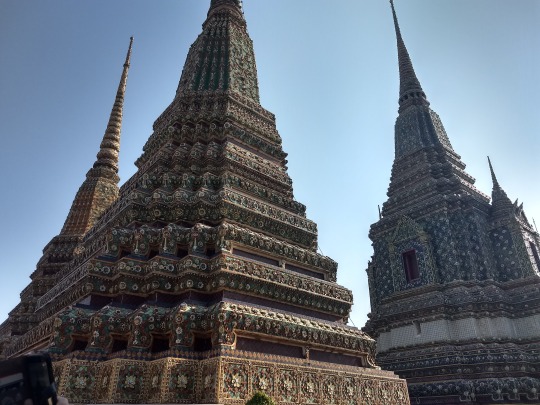
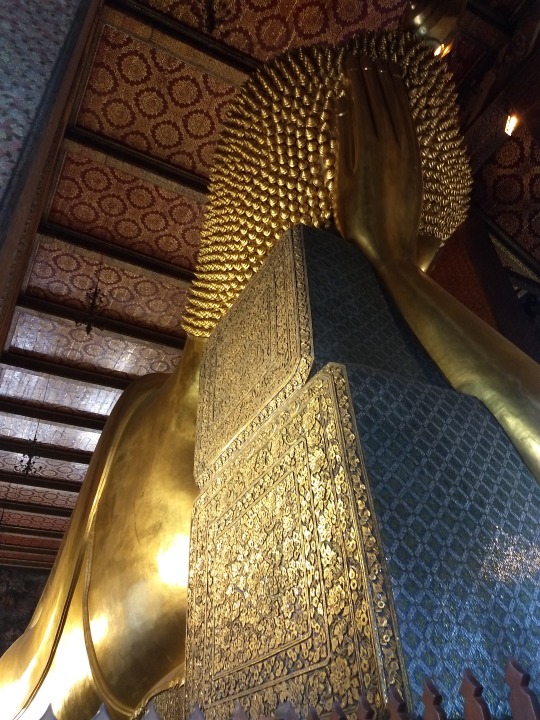
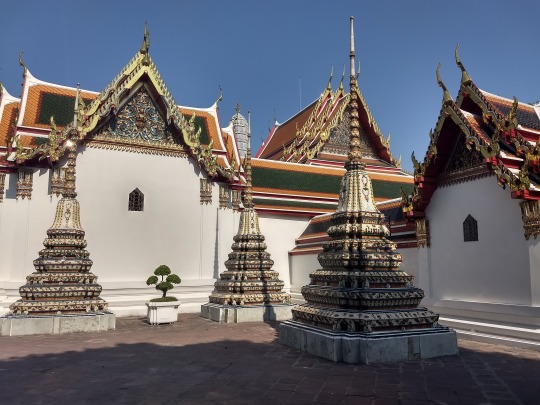
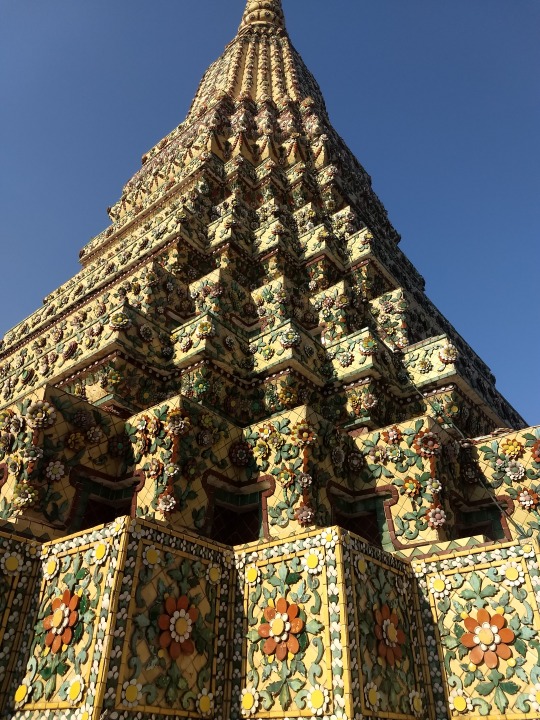

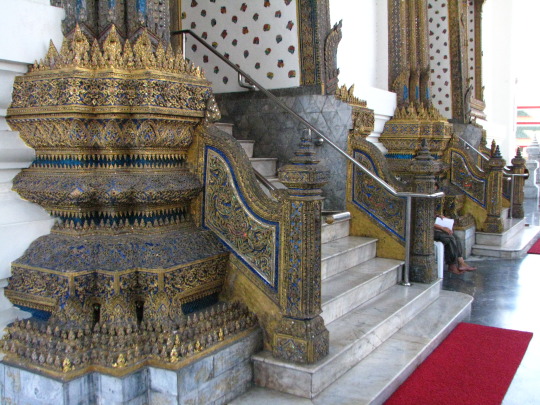
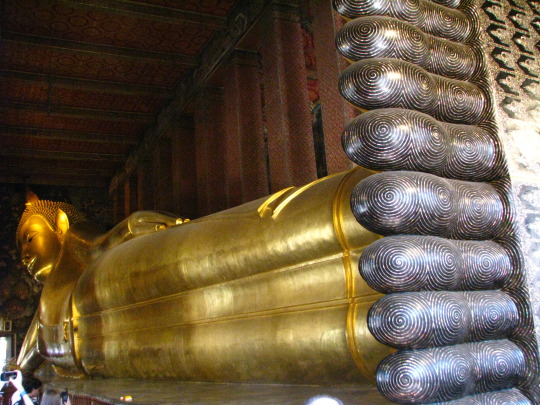
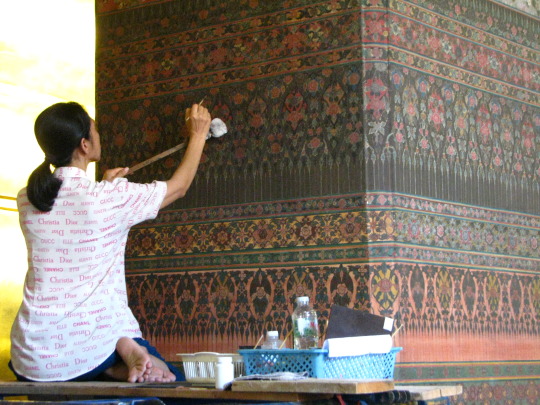
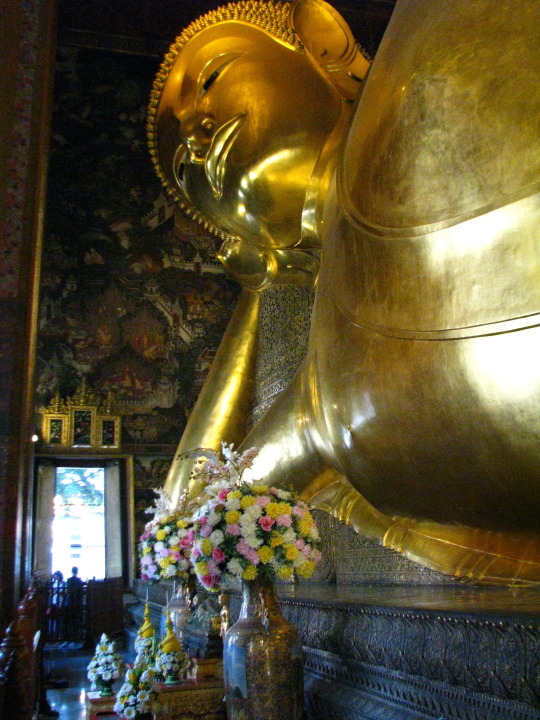
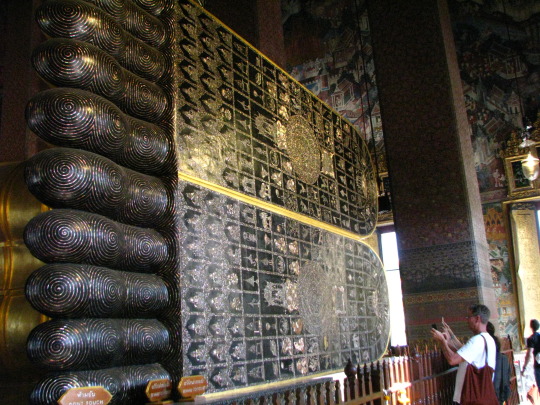
Wat Pho
“The temple is first on the list of six temples in Thailand classed as the highest grade of the first-class royal temples. It is associated with King Rama I who rebuilt the temple complex on an earlier temple site. It became his main temple and is where some of his ashes are enshrined. The temple was later expanded and extensively renovated by Rama III. The temple complex houses the largest collection of Buddha images in Thailand, including a 46 m long reclining Buddha.
The temple is considered the earliest centre for public education in Thailand, and the marble illustrations and inscriptions placed in the temple for public instructions has been recognised by UNESCO in its Memory of the World Programme. It houses a school of Thai medicine, and is also known as the birthplace of traditional Thai massage which is still taught and practiced at the temple.”
The architecture of Wat Pho is breathtaking and the detail and extent of the ornamentation on the buildings is just incredible. It is also way less crowded than Wat Phra Kaew & the Grand Palace, and to top it all off, there are a lot of friendly cats on the temple grounds :-)
Source: Lonely Planet guide to Thailand.

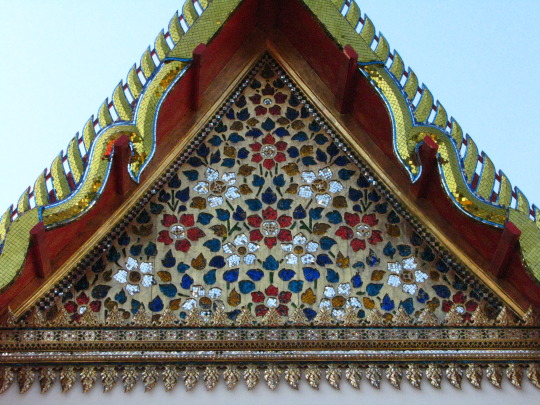
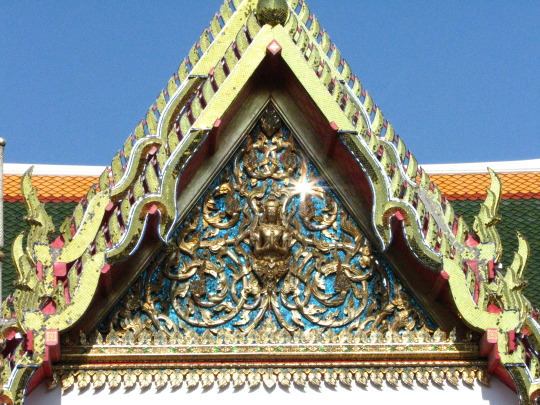
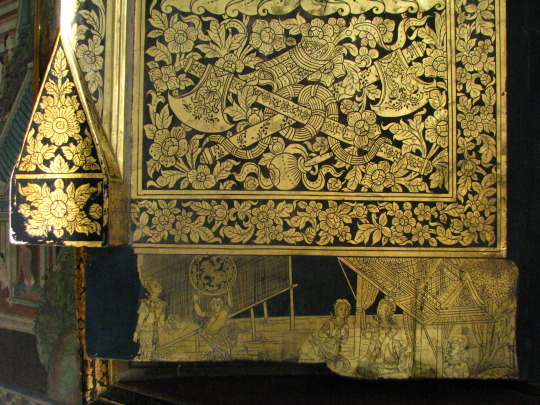
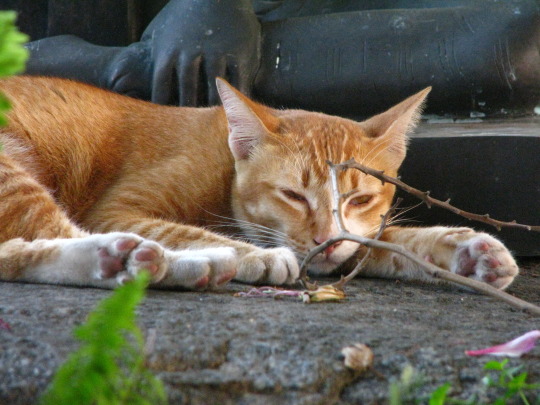
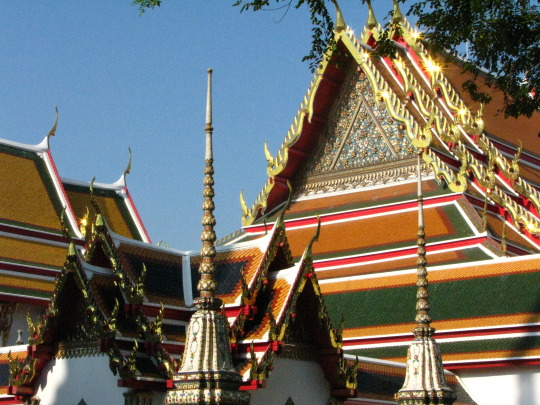

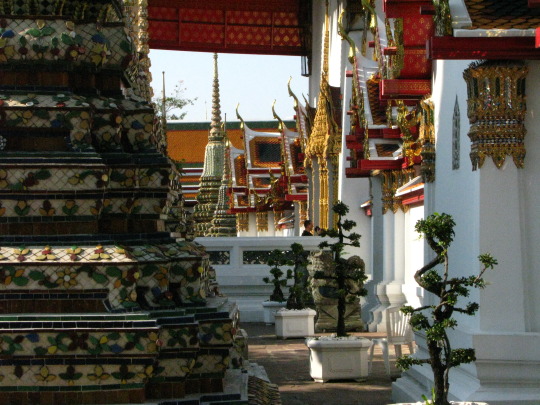
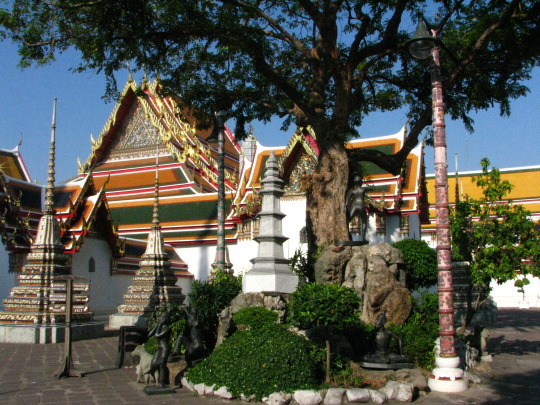

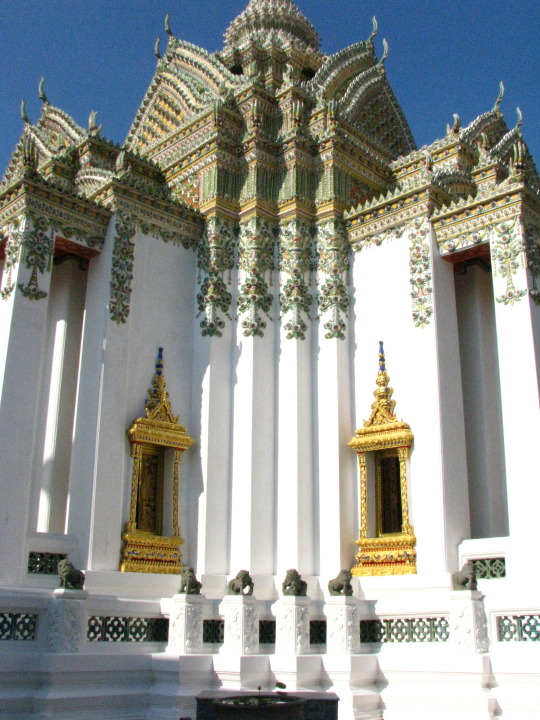
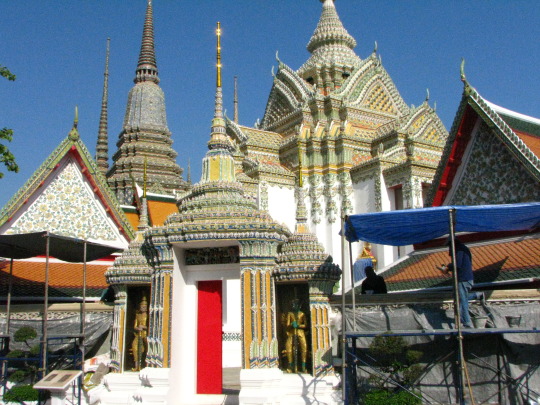
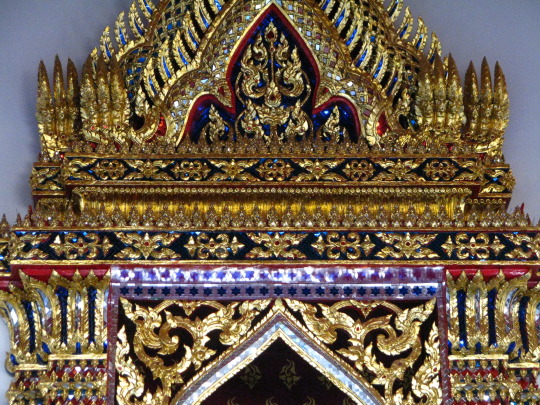
#wat pho#watpho#buddhisttemple#bangkok#bangkoktravel#bangkoktemple#thailand#thaitemple#recliningbuddha#architecture#oldarchitecture#overthetop#friendlycat#thaiarchitecture
4 notes
·
View notes
Photo












Khlong Bang Luang Artist’s House
Please click on any photo for a description.
This unique place is a historic Thai open-air house in the old canal neighbourhood of Thonburi. It welcomes visitors free of charge to enjoy its gallery, traditional style puppet shows (weekends at 2pm), cafe, workshop space, and art shop.
Artists’ touches are everywhere you look, and the house is absolutely charming.
For those interested in historic neighbourhoods, architecture, art, or performing arts, this place is highly recommended.
I was especially excited to see the puppet (marionette) show, as performing arts are one of my main interests. Here’s a little more information about this type of show:
“In Thai, they are called la kon lek (little theatre) or hun loo ang (royal puppets). Like kohn [traditional Thai dance-drama] they were once reserved for court performances. Metre-high marionettes made of koi paper and wire, wearing elaborate costumes modeled on that of the kohn...[t]wo to three puppet masters are required to manipulate each [puppet] by means of wires attached to long poles. Stories are drawn from Thai folk tales.”
Each puppet takes 3 months for a master craftsman to make and costs upwards of 80 000 baht (about $3500 Canadian dollars). “They are highly collectible; the Bangkok National Museum only has one in its collection.”
Source: Lonely Planet Thailand guide.

#khlongbangluang#canalhouse#historichome#history#artgallery#artworkshop#artistshouse#arthouse#performingarts#thaipuppetshow#thaipuppet#puppettheatre#performingart#performance#canallife#floatingmarket#historichouse#artist#bangkokartist#bangkokart#art#thailand#thaiart#thaiartist
0 notes
Photo










Museum of Contemporary Art Bangkok - Part III
Please click on any image for the title and artist’s name.
“MOCA BANGKOK displays works of art inspired by traditional Thai modes of expression alongside art that has been influenced by the introduction of Western artistic styles and techniques.
Some 800 works selected from Boonchai Bencharongkul’s private collection are exhibited in the 20,000 square metres of well – lit white space. These artworks stand as a statement of Thai creativity, beliefs, and thought processes.
They also place for the first time on permanent display, a large quantity of what can be considered the best works of Thai art-a testament to its overall quality – standing equal to that produced by any other country in the world. Thus, MOCA BANGKOK provides an insightful view of the country and its people.”
I have to say that this gallery is the most impressive contemporary art gallery I have ever been to. The size of the gallery, the scope of the collection, and the quality of the work is outstanding. Continued in Parts I and II.
Source: mocabangkok.com
#moca#mocabangkok#contemporaryart#artwork#thaiart#thaiartist#artgallery#art#artmuseum#bangkokgallery#bangkokart#bangkok#thailand
3 notes
·
View notes
Photo










Museum of Contemporary Art Bangkok - Part II
Please click on any image for the title and artist’s name.
“MOCA BANGKOK displays works of art inspired by traditional Thai modes of expression alongside art that has been influenced by the introduction of Western artistic styles and techniques.
Some 800 works selected from Boonchai Bencharongkul’s private collection are exhibited in the 20,000 square metres of well – lit white space. These artworks stand as a statement of Thai creativity, beliefs, and thought processes.
They also place for the first time on permanent display, a large quantity of what can be considered the best works of Thai art-a testament to its overall quality – standing equal to that produced by any other country in the world. Thus, MOCA BANGKOK provides an insightful view of the country and its people.”
I have to say that this gallery is the most impressive contemporary art gallery I have ever been to. The size of the gallery, the scope of the collection, and the quality of the work is outstanding.
Continued in Parts I and III.
Source: mocabangkok.com
#moca#mocabangkok#museum of contemporary art#contemporaryart#art#thaiart#thaiartist#bangkokart#bangkokthailand#artgallery#thailandart#thailand art#artwork#thailand#bangkok
6 notes
·
View notes
Photo










Museum of Contemporary Art Bangkok - Part I
“MOCA BANGKOK displays works of art inspired by traditional Thai modes of expression alongside art that has been influenced by the introduction of Western artistic styles and techniques.
Some 800 works selected from Boonchai Bencharongkul’s private collection are exhibited in the 20,000 square metres of well – lit white space. These artworks stand as a statement of Thai creativity, beliefs, and thought processes.
They also place for the first time on permanent display, a large quantity of what can be considered the best works of Thai art-a testament to its overall quality – standing equal to that produced by any other country in the world. Thus, MOCA BANGKOK provides an insightful view of the country and its people.”
I have to say that this gallery is the most impressive contemporary art gallery I have ever been to. The size of the gallery, the scope of the collection, and the quality of the work is outstanding. Please click on any image for the title and artist’s name. Continued in Parts II and III.
Source: mocabangkok.com
#museumofcontemporaryart#moca#mocabangkok#contemporaryart#artgallery#thai#art from thailand#thailand art#bangkokartgallery#bangkokart#bangkokthailand
1 note
·
View note
Photo















The Grand Palace and Ramakian Murals
The Grand Palace, on the same grounds as Wat Phra Kaew (see previous post), was built in 1882. The main building, the Grand Palace Hall (Chakri Mahaprasat) is a “peculiar blend of Italian Renaissance and traditional Thai architecture. It’s a style often referred to as...Westerner in a Thai crown because each wing is topped by a heavily ornamented spire representing a Thai adaptation of [a] Hindu shrine.
Thai kings housed their huge harems in the inner palace area, which was guarded by combat-trained female sentries.”
I’ve also included a few more pictures of the murals at Wat Phra Kaew that I couldn’t fit in my last post. These murals line the inside walls of the temple compound and illustrate the Ramakian, the Thai version of the Ramayana epic of India.
Source: Lonely Planet guidebook to Thailand.
#grandpalace#grandpalacethailand#grandpalacebangkok#ramakian#bangkokarchitecture#bangkokthailand#thai#thaipalace#thailand#watphrakaew#chakrimahaprasat#traditionalarchitecture#oldarchitecture#italianrenaissance#spire#bangkoktravel
1 note
·
View note
Photo














Wat Phra Kaew - the Temple of the Emerald Buddha
Wat Phra Kaew is “Bangkok’s biggest tourist attraction and a pilgrimage destination for devout Buddhists and nationalists. The 94.5 hectare grounds encompass more than 100 buildings [including the Grand Palace - see next post] that represent 200 years of royal history and architectural experimentation.” Most of the buildings are old-Bangkok style (Ratanakosin).
“Murals of the Ramakian (the Thai version of the Indian epic the Ramayana) line the inside walls of the temple compound. Originally painted during the reign of Rama I (1782-1809) and also recently restored, the murals illustrate the epic in its entirety.”
Source: Lonely Planet Thailand.
#watphrakaew#watphra#bangkok#bangkokthailand#famoustemple#thaitemple#bangkoktemple#templeoftheemerald#buddhisttemple#temple#bangkokarchitecture#oldbangkok#oldthailand
0 notes
Photo










Bangkok Street Scenes Part II
Click on any photo to see a description.
#streetlife#streetscene#streetfood#bangkok#thailand#bangkokthailand#streetfoodthailand#streetphoto#streetphotobangkok#streetphotography#bangkoklife#reallifescene
0 notes
Photo
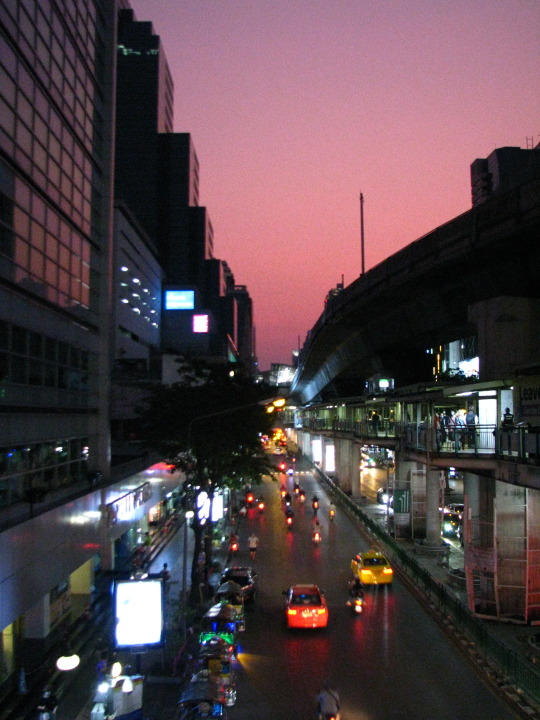









Bangkok Street Scenes
Click on any photo to see a description.
#bangkok#bangkokthailand#streetscene#bangkokstreet#bangkoklife#streetlife#bangkokscene#bangkokthai#streetphotography#streetphoto#streetphotobangkok
0 notes
Photo










Bangkok Street Art
Bangkok, Thailand. Downtown and canal side near Baan Krua neighbourhood. February 2020.
The artist of the mural of the rabbit-costumed person is Asiola. The title is “Peace for Bangkok.”
#streetlife#streetart#mural#muralpainting#freeart#free art#bangkokart#thailand#thailandstreetart#thai#bangkoklife#outdoorart#outdoors#asiola
2 notes
·
View notes
Photo








Japanese Plum Blossoms
Here in Japan things actually grow and bloom in the middle of winter. These photos were taken on February 9th, 2020. It’s the coldest time of the year here - frequently zero degrees or lower - and these trees suddenly burst into bloom.
I also love cherry blossoms, but to me there is something extra special about plum blossoms since they arrive exactly when it’s the coldest and dreariest time of the year.
#plumblossom#plumblossoms#winterblooms#japaneseplumblossom#winterflowers#japantravel#japan#heiwapark#nagoya
1 note
·
View note
Photo










Shirotori Gardens - Part 2
I also came across an open-air exhibition of Japanese washi (paper) sculptures while visiting the gardens. It’s amazing how detailed and delicate they were; they were under glass boxes for protection. And does anyone know what those yellow fruits/vegetables hanging from that tree are? They are such an unusual shape.
#washi#artexhibition#shirotori#shirotorigarden#nagoya#nagoyagarden#japanesegarden#nagoyajapan#japantravel#japan
0 notes
Photo










Shirotori Gardens - Part 1
Every sizable Japanese city has a number of impressive Japanese-style gardens; they are usually free or available to enter for a nominal fee. And you may happen upon a performance like the taiko drum show in the last photo.
These photos are of Shirotori Garden in Nagoya. I visited back in mid-November, but never got around to posting the photos until now. I thought it would be nice to revisit the fall colours again now that it’s midwinter.
0 notes
Photo










Kennin-ji Zen Buddhist Temple. Kyoto, Japan.
The first photo is an artwork by Toba Mika at the temple.
1 note
·
View note
Photo

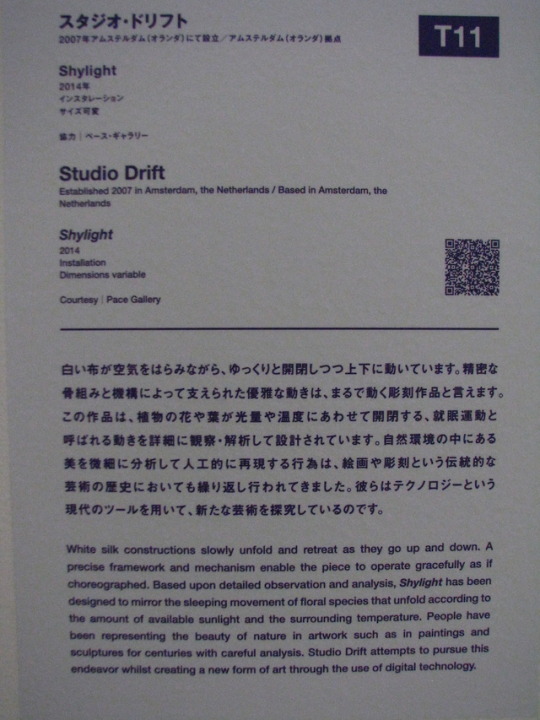
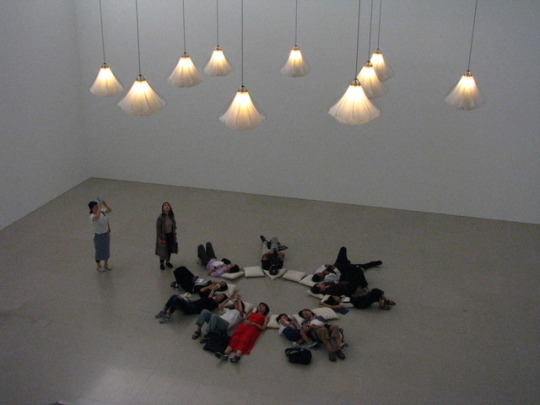





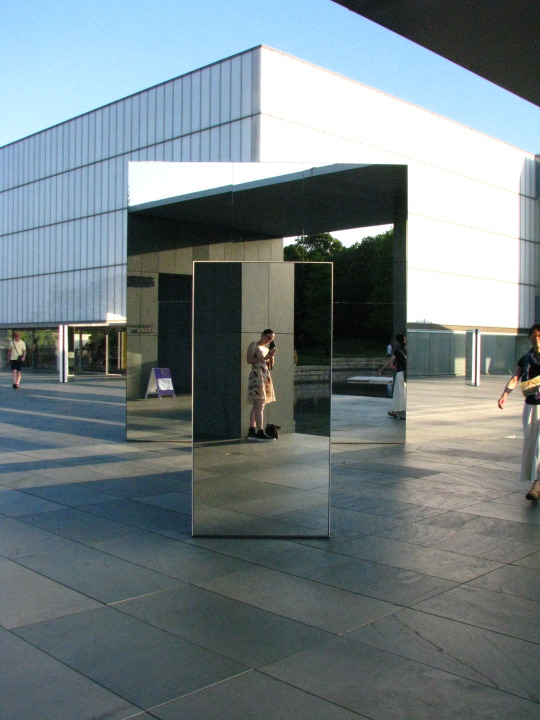

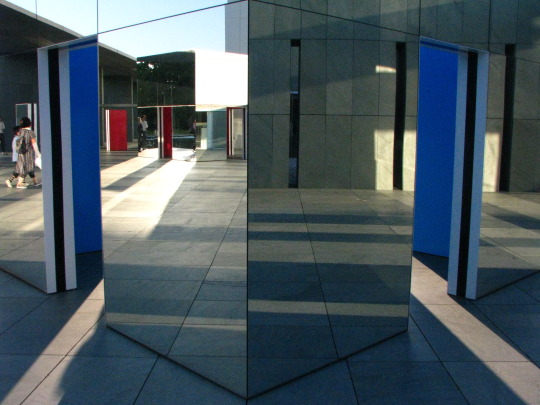

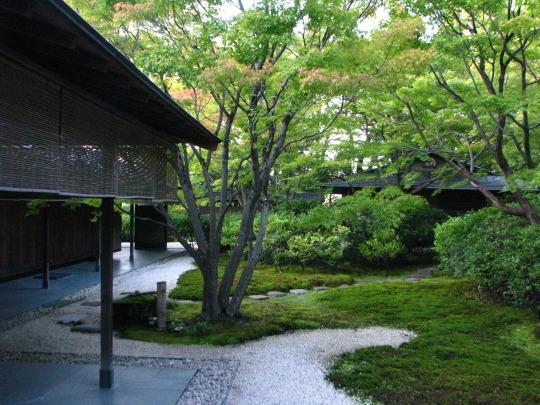
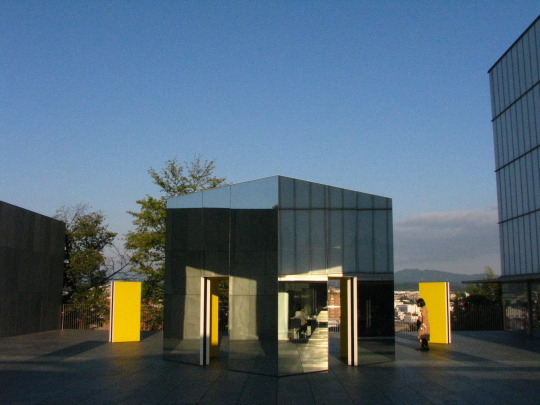

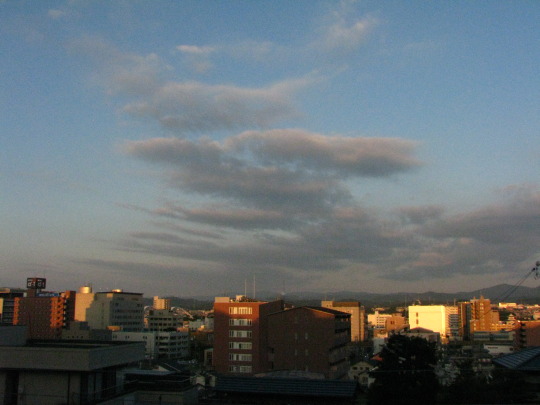
Toyota Municipal Museum of Art
I went to the Toyota Municipal Museum of Art in Toyota, Japan to see the “Gustav Klimt Vienna-Japan 1900″ and the Aichi Triennale (international, multi-venue art fair) exhibition (I posted about the Triennale previously if you’re interested).
The Toyota Municipal Museum of Art is one of the most beautiful and interesting art museums I’ve seen. It was designed by renowned museum designer Taniguchi Yoshio. Additionally, the grounds were designed by landscape artist Peter Walker. It’s on a huge property and is bordered by a traditional Japanese teahouse and garden (see above photos) as well as a castle ruin. A whole day can be spent not only looking at the exhibits but enjoying the architecture, grounds, and surrounding properties.
In case you were wondering, Toyota is in fact home to Toyota car company and 80% of the town works at Toyota :-)
The Aichi Triennale’s exhibits were outstanding. Every single exhibit had an important theme or social comment. The photos above show just a couple. The floral designs by Studio Drift touched on the theme of digital technology in art (do we react the same way to it?), and the work about the Okinawa protests draws attention to a very big issue here: 75% of the U.S. bases in Japan are in Okinawa, even though it is the smallest part of the country. There have been many instances of crime, often violent, as well as accidents (often caused by negligence), not to mention environmental degradation due to the construction/relocation of bases. Specifically, destroying the natural habitat of sea animals including the dugong, or manatee, by filling in the port areas where these animals live has been a particular point of contention.
There were a couple other works that I didn’t take photos of, but I wanted to mention: Taryn Simon’s photos were mind-blowing. I can’t believe some of these photos/videos were allowed to be taken. For instance, she had photos of everything confiscated by the U.S. border patrol in a 24 hour period at one airport; another video showed a test bombing by the US military; another showed glowing blue circles which are actually barrels of radioactive material at a restricted site. Thought-provoking, to say the least.
Another notable series of works were by Reynier Leyva Novo, who took photos of re-created floral tabletop arrangements. What makes this interesting is that these arrangements were at the signing tables of famous trade/political deals. Just the floral arrangements, with a description of the deal beside it. The deals described were often contentious or unethical, and a lot of them were very high-profile. We are talking major deals between countries that were often very shady. It was so interesting to not only read about these deals, but the presentation... just featuring the flowers, looking so inconspicuous in themselves.
Just google Taryn Simon and Trynier Leyva Novo to see examples of their work. In particular, I think these two artists are among the best of the Triennale.
#aichi#aichi prefecture#toyota#toyotacity#toyota city#toyotamunicipalmuseumofart#aichitriennale#artexhibit#artexhibition#visualart#politicalart#architecture#japanesearchitecture#japanese architecture#teahouse#japaneseteahouse#artmuseum#artgallery#internationalart#okinawa#manatee#mirrors#mirrorshine#japaneseculture#modernjapan
21 notes
·
View notes
Photo
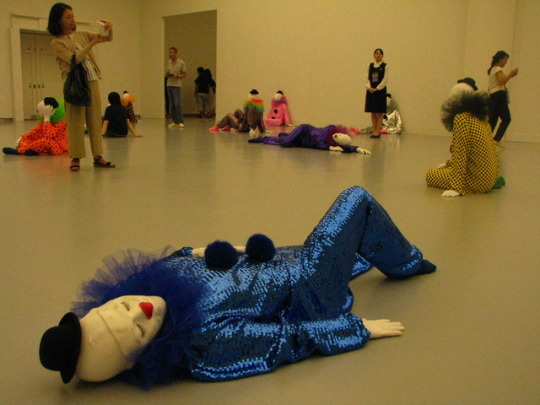
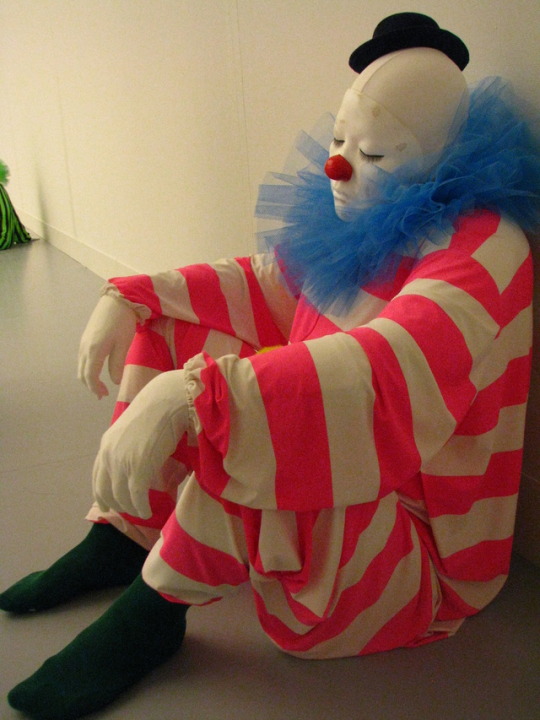
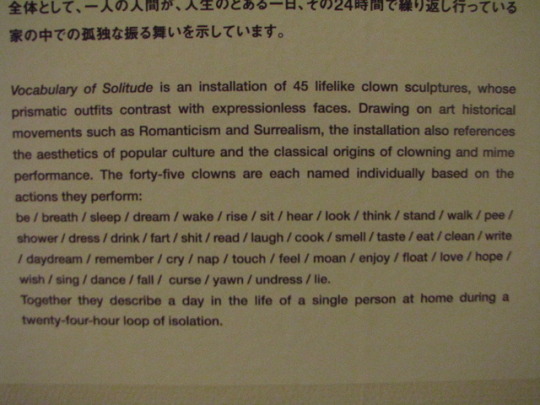





Aichi Triennale 2019 - Taming Y/Our Passion
The Aichi Triennale is Japan’s largest international art fair.
I visited two of the main venues (Aichi Arts Center and Nagoya City Museum of Art) and was impressed by the quality of the works on display. Every single piece dealt with a theme that is important in today’s life. The blurring of ethnic boundaries, the rewriting of history, the effect of technology and science on our lives, and social isolation are just some of the themes apparent in the works. To me, art should not just be a beautiful thing to look at (although that also has a place, and I am a big fan of many of those kinds of artworks myself) but should hold up a mirror to our society and world. All the works I saw at this exhibition did that very well.
The first photos are of “Vocabulary of Solitude” by Ugo Rondione. Yes, it’s a room full of clowns wearing masks and garish costumes. For a moment, when I first entered the room, I thought they were real people (they are life-sized) and was a little afraid to enter. (I soon realized that they’re statues and walked among them). The theme of this work is solitude; perhaps social isolation.
The last photos are of a work called “The Clothesline” by Monica Mayer. This work has been re-created many times since 1978. Participants are asked to write the answers to 4 questions on a card. It is then hung on a line for all to read. This project aims to raise awareness about sexual violence.
The last photo is of two letters. One is by an artist who claims her work, called “After Freedom of Expression?” was removed from the exhibition as an act of censorship, and the other is a rebuttal from the Aichi Triennale Organizing Committee, who claims that the work was removed “to ensure a safe and secure setting for visitors to enjoy the Triennale.” The fact is that there has been a LOT of controversy over the exhibition this year. In particular, “After Freedom of Expression?” deals with the issue of South Korean “comfort women” (basically women forced to become sex slaves to the Japanese army before and during WWII). The mayor of Nagoya himself demanded it be removed. I think that fits the definition of censorship.
You can read more about it here: http://www.artnews.com/2019/08/13/aichi-triennale-2019-work-removal/
and here: https://mainichi.jp/english/articles/20190803/p2a/00m/0na/005000c
#aichi#aichiprefecture#aichi prefecture#aichi triennale#aichitriennale#aichitriennale2019#aichi triennale 2019#controversy#censorship#art#artexhibition#internationalartexhibition#japaneseart#nagoya#nagoyajapan#controversialart#creepyclown#clothesline#pinkclothes#southkorea#south korea
2 notes
·
View notes